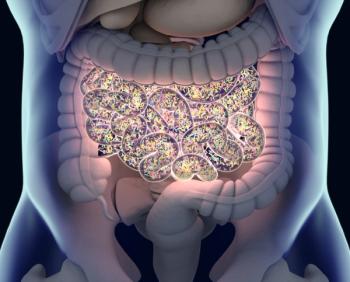
FDA Grants Fast Track Status to Neoadjuvant APG-157 in Head and Neck Cancer
Investigators are evaluating the efficacy and safety of APG-157 for patients with head and neck cancer in a phase 2 clinical trial.
The FDA has granted fast track designation to the investigational immune-oncology agent, APG-157, as a neoadjuvant treatment for patients with head and neck cancer, according to a press release from the developer, Aveta Biomics.1
Developers designed APG-157 to exhibit a dual mechanism by selectively inducing cancer cell apoptosis while reprogramming the immune environment. The agent, an orally administered lozenge, is derived from Curcuma longa, which typically serves as a source of the spice Turmeric.2 Investigators believed that administering APG-157 as neoadjuvant treatment may reduce the need for extensive surgery and other intensive therapies in patients with head and neck cancer.
“There is an urgent need for new treatments for [patients with] head and neck cancer, many of whom [have] poor survival odds and considerable morbidities following current standard-of-care treatments, including surgery, radiotherapy, and chemotherapy/targeted treatments,” Parag Mehta, PhD, chief executive officer at Aveta Biomics, said in the press release.1 “The rare grant of fast track designation for neoadjuvant treatment in head and neck cancer underscores the FDA’s recognition of the potential role of APG-157 in providing meaningful treatment benefits to these patients.”
Investigators previously launched a phase 2 trial (NCT05312710) evaluating the safety and efficacy of neoadjuvant APG-157 in patients with newly diagnosed, locally advanced head and neck cancer of the oral cavity and/or oropharynx.3
“Oral cancer affects the tongue, mouth, and throat. It’s common in people who smoke or have the human papillomavirus….Surgery of the mouth or tongue is painful, and the recovery is long,” Marilene B. Wang, MD, a head and neck surgeon and a professor in the Department of Head and Neck Surgery at the University of California, Los Angeles School of Medicine, said in a press release on this trial.2 “We found APG-157 to shrink small oral tumors and possibly stabilize the growth of large ones. With smaller tumors, the amount of radiation or chemotherapy can be reduced, or smaller surgeries performed.”
In this study, an estimated total of 24 patients will receive APG-157 at 100 mg as 2 pastilles 3 times a day. Treatment with APG-157 will continue for 4 to 6 weeks before patients receive other therapies.
The trial’s primary end point is the ability of APG-157 to impact tumor size based on MRI with or without contrast and PET/CT imaging. Secondary end points include changes in immunohistochemistry profile, changes in in cytokine levels, and changes in cell-free RNA biomarkers in blood and saliva from baseline to the end of treatment.
Patients 18 years and older with confirmed oral cavity or oropharyngeal squamous cell carcinoma and newly diagnosed stage I to IV head and neck squamous cell cancer are eligible for enrollment on the trial. Those who are scheduled to receive subsequent local therapy with curative intent surgery with or without radiation or radiotherapy with palliative intent alone are also able to enroll on the trial.
Patients with definitive local therapy available in less than 4 weeks from initial diagnosis or prior chemotherapy or radiotherapy within 8 weeks of study entry are ineligible for enrollment. Having recurrent or metastatic cancer, tooth abscesses, bleeding gums or cracked teeth, and a fracture of the mandible or maxilla within 8 weeks of entry are also grounds for exclusion from the trial.
“This fast track designation, based on our comprehensive phase 1 and phase 2 data, accelerates our ability to bring our promising first-line therapy to all [patients with] newly diagnosed, locally advanced head and neck cancer in a frontline setting,” Karim Malek, MD, MTh, MBA, chief medical officer at Aveta Biomics, concluded.1
References
- FDA grants fast track designation to Aveta Biomics’ drug APG-157 for neoadjuvant treatment of head and neck cancer. News release. Aveta Biomics. August 22, 2024. Accessed August 23, 2024. https://tinyurl.com/4kya8f55
- VA clinical trial of a naturally-derived drug lozenge shows promising results and safety in combating oral cancer. News release. U.S Department of Veterans Affairs. September 2, 2022. Accessed August 23, 2024. https://tinyurl.com/56jp3pr4
- Safety and efficacy of APG-157 in head and neck cancer. ClinicalTrials.gov. Updated August 14, 2024. Accessed August 23, 2024. https://tinyurl.com/2atkk3t3
Newsletter
Stay up to date on recent advances in the multidisciplinary approach to cancer.






























































































